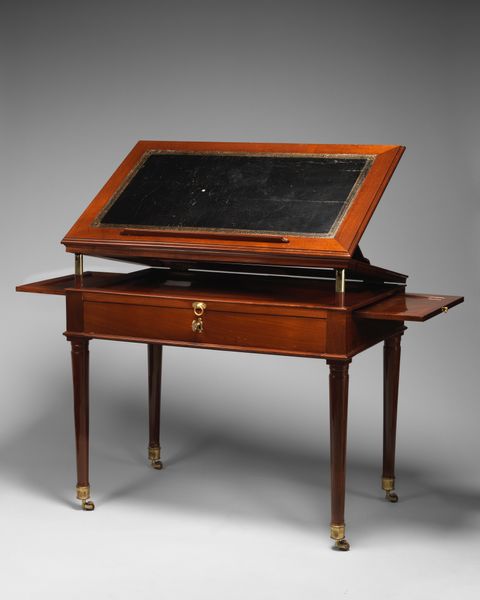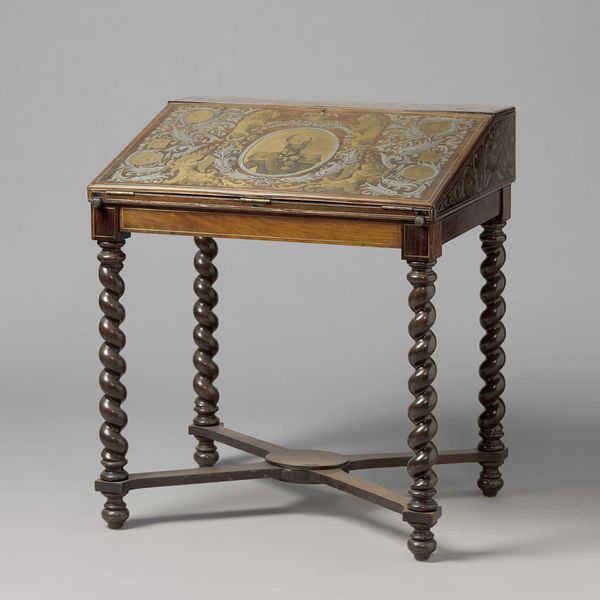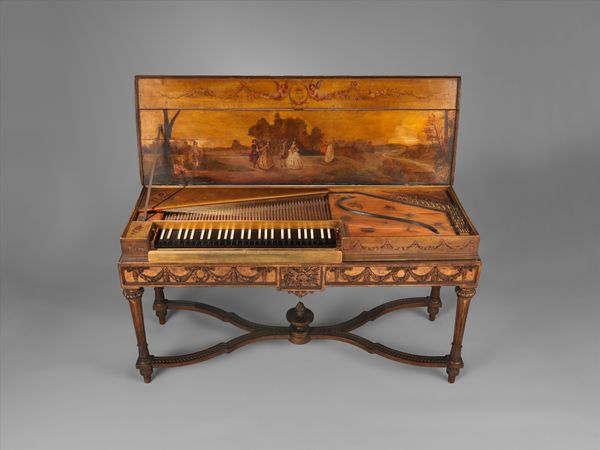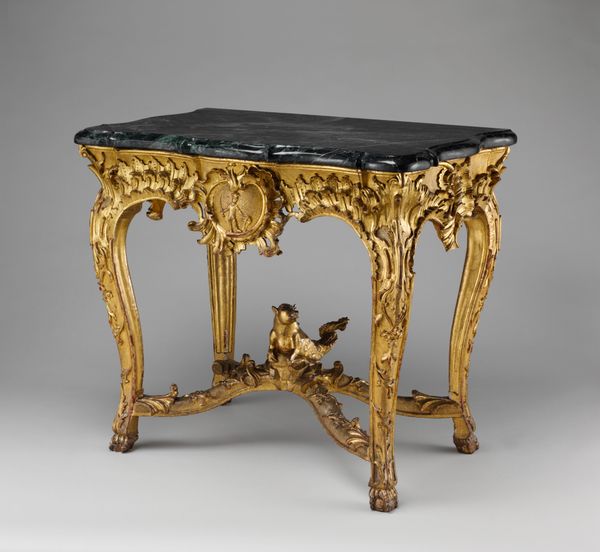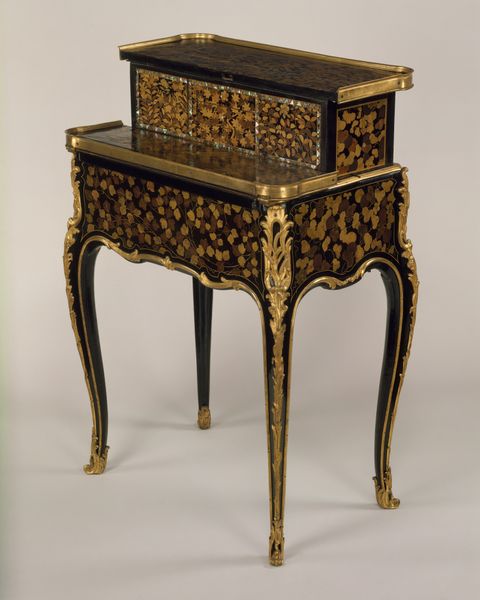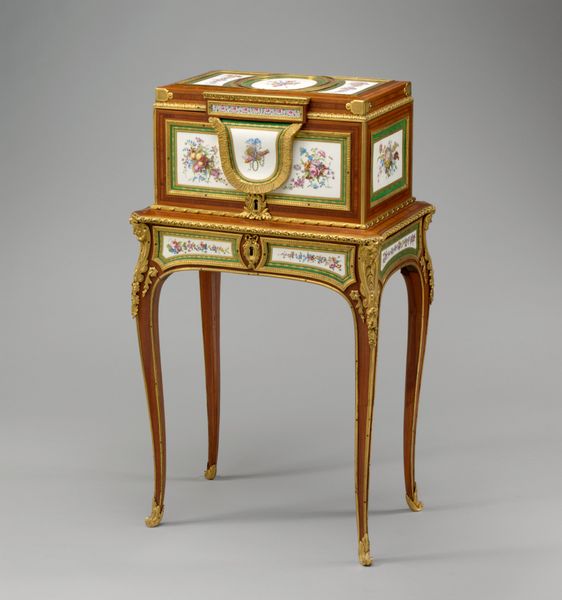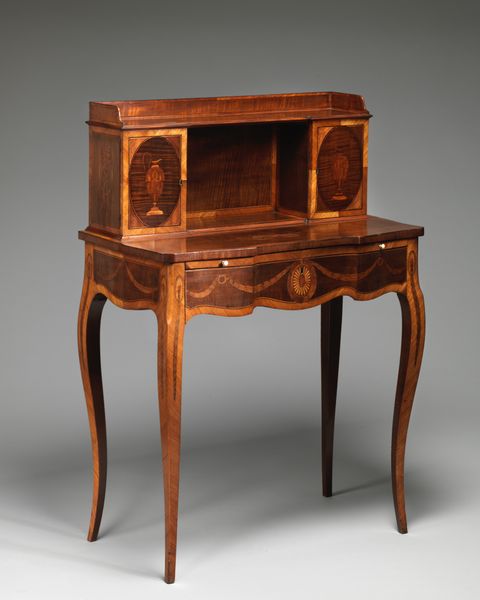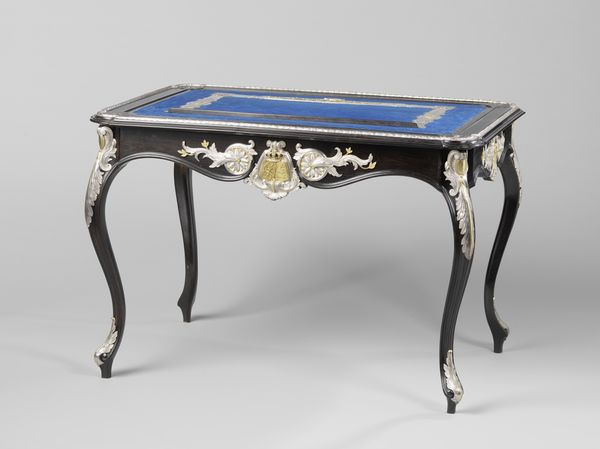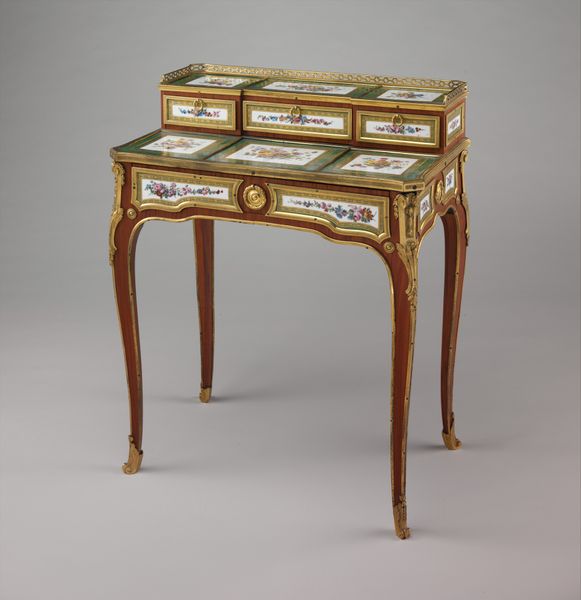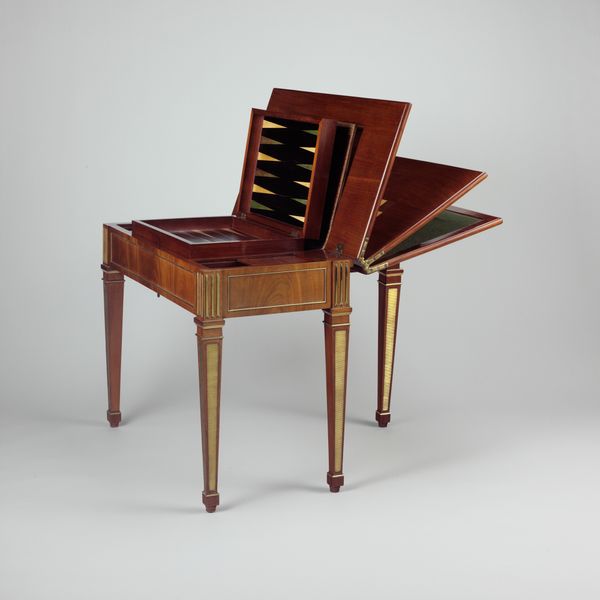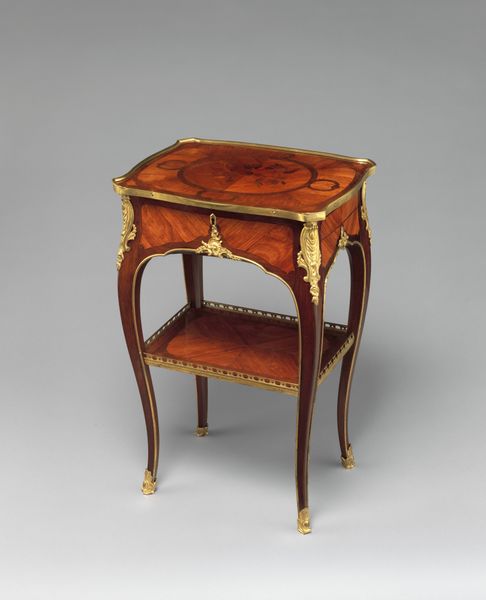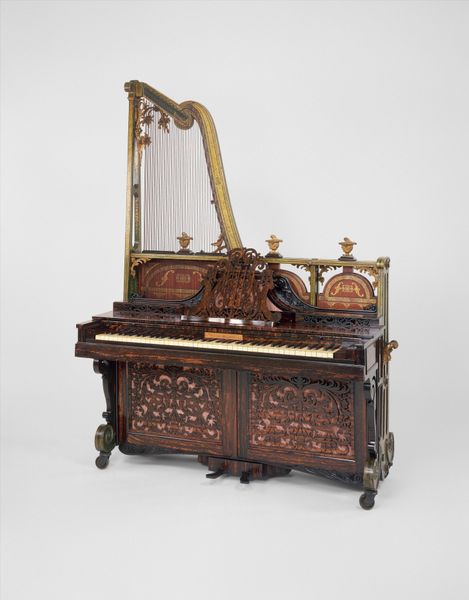
Combined work, writing, and reading table and music stand 1770 - 1780
0:00
0:00
Dimensions: ht. closed, confirmed: 30 1/2 × 15 3/4 × 12 3/8 in. (77.5 × 40 × 31.4 cm) ht. maximum extension: 43 5/8 in.
Copyright: Public Domain
Curator: Ah, isn’t it exquisite? This multi-functional table and music stand was crafted sometime between 1770 and 1780 by Martin Carlin. Editor: My goodness, it’s… striking. A slender silhouette in contrasting ebony and ormolu. I’m immediately drawn to the tiered structure, how the planes of the desk float. Curator: Carlin was celebrated for his innovative designs catering to the aristocratic taste for refinement and versatility. Think about the period; literacy was flourishing among the elite, music became increasingly important, all enhanced by these accoutrements. Editor: Precisely. And it seems the whole piece is unified by these recurring gilded motifs: look at those garlands just under the writing surface, echoing the detailing on the legs. It establishes a cohesive, elegant language throughout the stand. Curator: Function very much follows form, you know? The rising popularity of private study and music rooms during the late 18th century fuelled demand for just this sort of adaptable furniture. Editor: I appreciate how the upward lift of the structure leads our eye to the tableau inlaid on the music stand itself. Does it tell a story, some narrative scene? Curator: Quite possibly! It's very much in the spirit of the Enlightenment. Items like this were tools of intellectual and artistic edification. Editor: What strikes me is the piece's surprising practicality. The integration of function is elegantly executed within an elaborate design. It's not just opulent. Curator: And its presence here at the Metropolitan Museum of Art reminds us of art's shifting status over the centuries – originally a functional object gracing a privileged domestic interior and later an art piece in a modern cultural institution! Editor: Indeed, and thinking purely of form, its clean vertical lines are striking. What do you make of the open structure, the visible supports? It gives the illusion that the top element is floating, as though disconnected from gravity. Curator: It speaks to that Age of Elegance. The lightness and refinement... Editor: Indeed. The work, reading, music table transcends mere functionality, achieving an airy aesthetic that is captivating to experience even today.
Comments
No comments
Be the first to comment and join the conversation on the ultimate creative platform.
